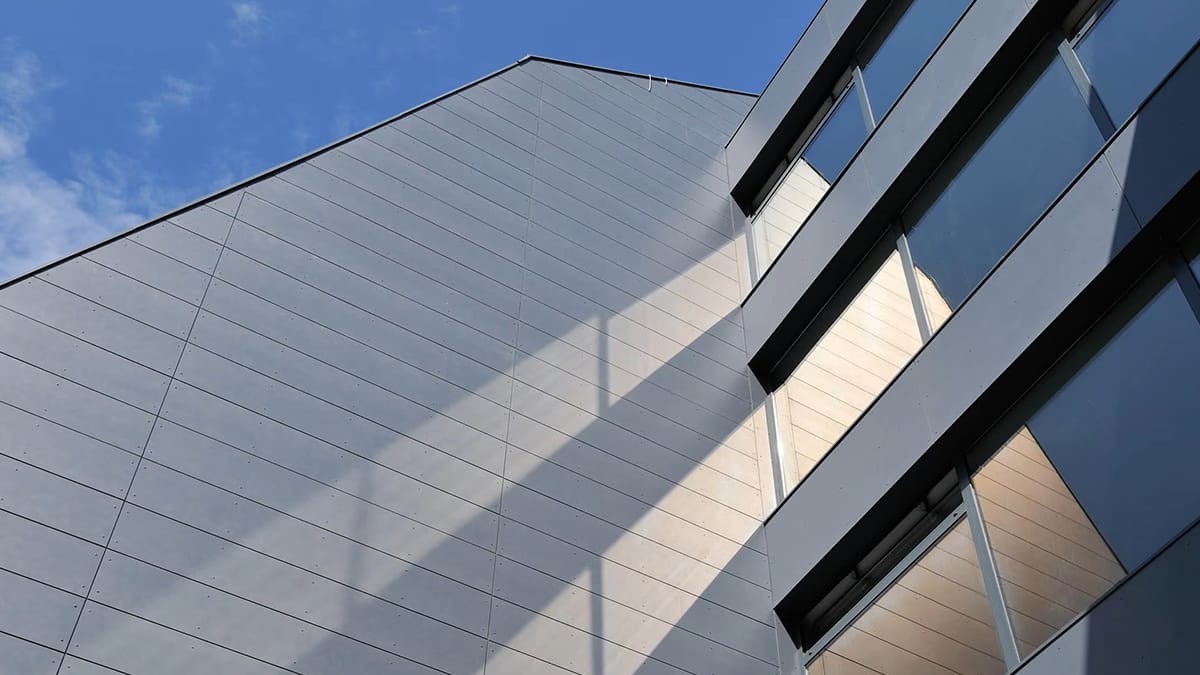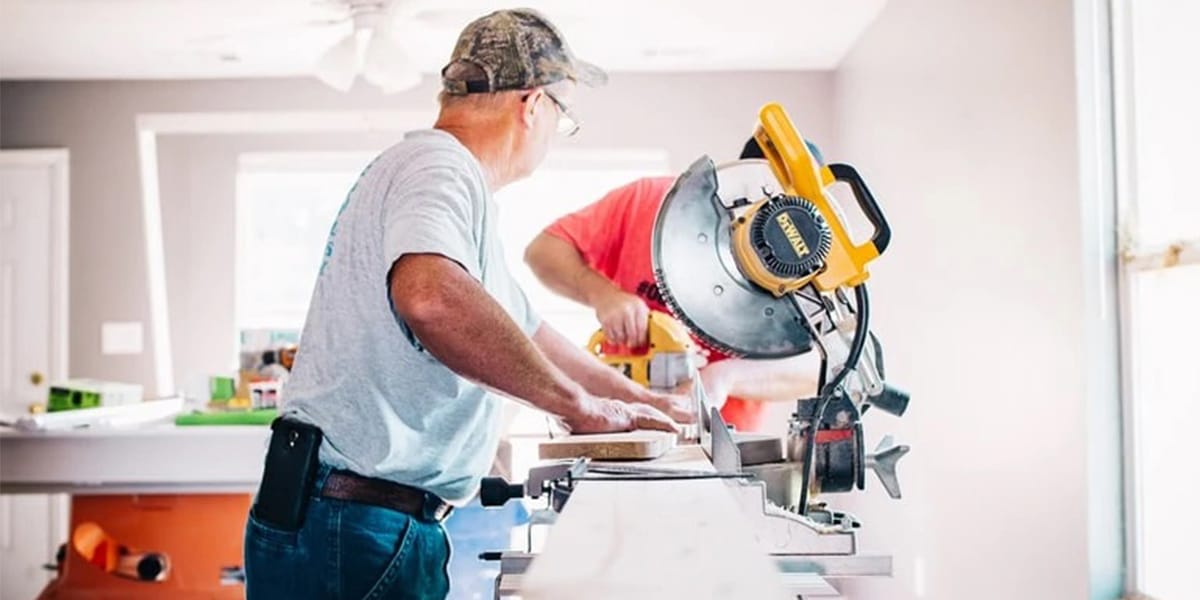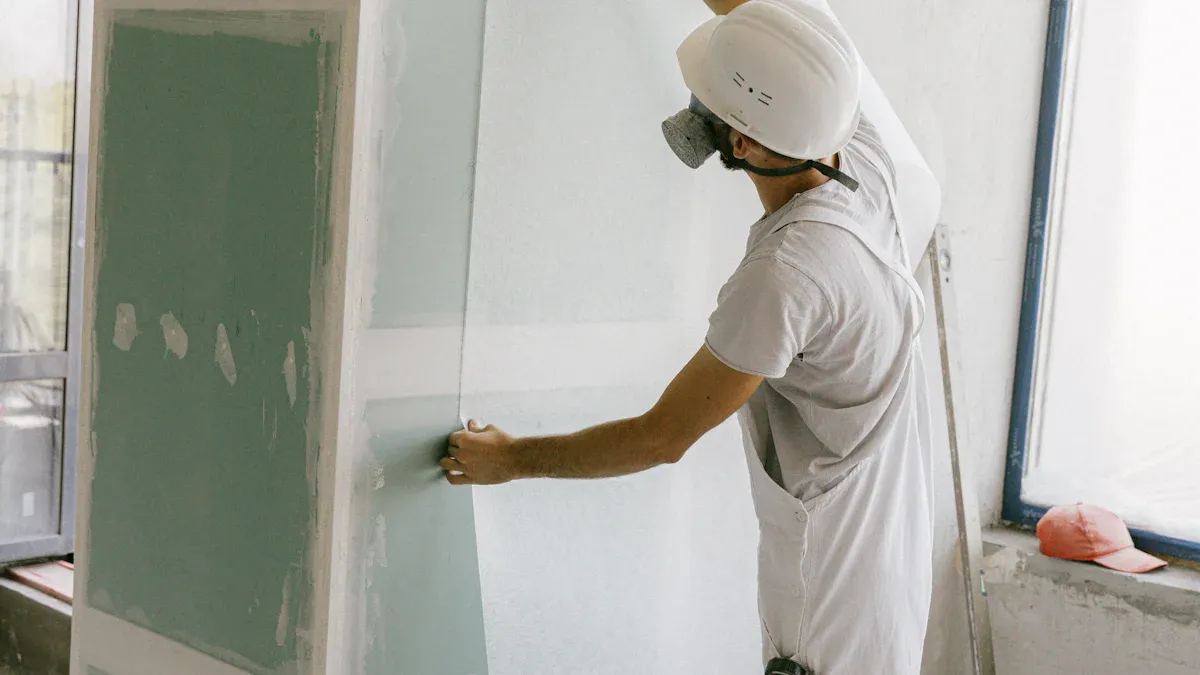
15 Nov The Problems Of Magnesium Oxide Wallboard Usage In Construction
Table of Contents
You can run into many problems of magnesium oxide wallboard in building projects. Builders say MgO boards soak up water, which can lead to dampness. This moisture can also cause mold and rust on metal parts. The table below lists the main problems of magnesium oxide:
Problem | Description |
|---|---|
Moisture Absorption | Boards soak up water. This leads to dampness and mold. |
Corrosion | Water makes metal parts rust. This means more money for repairs. |
Installation Challenges | Boards are heavy and break easily. They are hard to move and use. |
Compatibility Issues | Some finishes do not stick well. This can make them peel or crack. |
You should think about these problems of magnesium oxide before you pick MgO boards for your house or building.
Key Takeaways
Magnesium oxide boards can soak up water. This can cause damp spots and mold to grow. Always look for water damage before you put them in.
Corrosion is a big problem with MgO boards. Salty water can make metal parts rust. This can make repairs cost more. Use boards with less chloride and seal them well.
You need special tools to put in MgO boards. Use carbide blades and be gentle. This helps stop the boards from cracking.
MgO boards often have finishing problems. Always use a primer before you paint or put up wallpaper. This helps stop peeling.
You can use other boards like gypsum or fiber cement. These can help you avoid MgO board problems. Each type has good and bad points.
Problems of Magnesium Oxide in Construction
Moisture Absorption Issues
There are many problems when using mgo board in buildings. One big problem is moisture absorption. Mgo panels are said to resist water, but this is not always true. Some panels soak up water if made with bad materials. This can make salty water, called brine, inside the boards. Brine can leak out and cause more trouble.
Here is a table that shows how well different wallboards handle water:
Material | Moisture Resistance | Performance in Wet Areas |
|---|---|---|
MgO Board | High | Works well with water, does not soak it up. |
Cement Board | Moderate | Good for wet places, used under bathroom tiles. |
Gypsum Board | Low | Handles little water, gets weak if too wet. |
You might think mgo board does not have water problems, but some boards still soak up water. When water gets trapped, boards can crack and bend. This makes your walls weaker. Mold can grow if water stays for a long time. Mold can hurt the board and make your house unhealthy.
A study showed some magnesium oxide boards lasted over 33 years in the UK. But not all boards work the same. The problems depend on the board’s quality and type. You should check if the board meets good standards before using it.
Corrosion and Mold Risks
When mgo boards soak up water, more problems happen. If the panels have chloride salts, they can leak salty water. This salty water can rust metal frames and parts. You might see rust on steel or damage to wood. Reports from Denmark, Australia, and Canada show rust is common in wet buildings with mgo boards.
Here are some problems caused by corrosion:
Bad mgo boards have salts that soak up water.
Wet air makes salty water leak from the boards.
Salty water hurts metal parts and building frames.
Studies from many countries show these problems in real buildings.
Corrosion is not just ugly. It makes your home weaker. Steel frames can lose strength, and wet insulation can be bad for health. Repairs can cost a lot if rust spreads. Some new magnesium oxide boards, like magnesium sulfate panels, try to stop these problems, but you must check the product first.
Mold is another problem with mgo boards. Magnesium oxide boards fight mold better than drywall, but water can still cause trouble. Drywall often grows mold in wet places like bathrooms and basements. Magnesium oxide panels resist mold, but you should still look for mold if water stays in the walls.
Material | Mold Resistance |
|---|---|
Magnesium Oxide Board | High |
Drywall | Low |
You need to know about these problems before picking magnesium oxide for your project. The risks can hurt your building’s safety and strength. Many warranties do not cover mgo boards because of these problems. Always check if the board meets good standards and ask an expert if you are not sure.
Tip: Always check magnesium oxide panels for water, rust, or mold before you put them in. This helps you avoid big problems and keeps your building safe.
MGO Board Problems: Installation and Cost
 Difficult Installation Process
Difficult Installation Process
You can have trouble installing mgo boards. These boards need special tools and skills. You cannot cut them with a regular knife. You must use carbide-tipped knives or cement shears. Sometimes you need a circular saw that makes less dust. You should wear safety glasses and a mask for dust safety.
Here is a table that shows some common installation challenges:
Challenge | Description |
|---|---|
Specialized cutting tools | You need expensive saws with diamond or carbide blades for clean cuts. |
Brittleness | Mgo boards can be brittle, so they crack or break if you handle them wrong. |
Weak nail holding power | Fastening is harder because nails do not grip as well as in wood boards. |
Aesthetic finishing difficulties | You may need extra steps like skim coating and sanding for a smooth finish. |
Mgo boards are heavy and hard to carry. This means workers need more time and effort. Labor costs go up and the project slows down. If you do not follow the right steps, boards can crack or bend. These problems can make repairs expensive and hurt the board’s strength.
High Costs and Limited Availability
Mgo boards cost more than gypsum board. You pay more because you need special tools and handling. The table below compares installation costs:
Wallboard Type | Installation Cost Comparison |
|---|---|
Magnesium Oxide | Slightly higher due to special needs |
Gypsum Board | Lower, common and easy to install |
Getting mgo boards can be hard. There are not many factories that make them. Builders often wait longer for delivery. Tariffs and trade rules can make prices go up. Local laws can make it hard to buy mgo boards. Some places have different rules, which can cause confusion.
You should learn about these problems before you start building. Mgo boards can cause extra costs and slow down your work. Always check if your supplier follows good standards. This helps you avoid problems with strength and repairs.
Tip: Ask your supplier about delivery times and stock. Planning ahead helps you avoid delays and extra costs.
Disadvantages of Magnesium Oxide Board: Brittleness and Durability
Cracking and Weak Nail Holding
You may notice that mgo boards can be strong, but they also have some problems. One of the main mgo board problems is brittleness. When you handle or install these boards, they can crack if you do not use the right tools or methods. Micro cracking sometimes happens because of building movement, temperature changes, or even settling. In most cases, these cracks stay small if the building stays stable.
Mgo boards like MagPanel resist dents and cracks better than drywall.
You can use them in busy places such as schools or hospitals.
Micro cracking can still happen from wind, earthquakes, or big temperature swings.
Another challenge is weak nail holding. When you try to fasten mgo boards, nails and screws may not grip as well as they do in wood or drywall. This can make the boards less secure on your walls. If you use the wrong fasteners, you might see more cracking and warping over time. You need to use special screws and follow the manufacturer’s advice to avoid these problems.
Tip: Always use the right fasteners and handle mgo boards with care to reduce the risks of cracking and weak nail holding.
Long-Term Structural Concerns
You should also think about long-term durability when you choose mgo boards. Over many years, mgo board problems can get worse, especially if your building has high humidity. Mgo boards can absorb moisture from the air. This can lead to water droplets forming on the surface, a problem called “crying” or “sweating.” These droplets often contain salts, which can cause corrosion on metal parts and mold growth on wood.
Here is a table showing some long-term issues found in buildings with mgo boards:
Issue Identified | Description |
|---|---|
Water droplets with salts form on the surface, leading to corrosion and damage. | |
Mold Growth | Moisture lets mold grow on wood and other parts. |
Corrosion | Metal fasteners and fittings rust faster because of the salts in the water. |
You may see staining, mold, or even rust on your walls and frames after several years. These problems of magnesium oxide can weaken your building and make repairs expensive. The disadvantages of magnesium oxide board include these hidden risks that show up over time. If you live in a place with lots of rain or humidity, you face even more disadvantages and challenges with mgo boards.
Note: Regular checks and good ventilation help lower the risks linked to mgo board problems and improve durability.
Problems with Finishes and Compati bility
bility
Paint and Wallpaper Peeling
You may notice that mgo boards can create problems when you try to finish your walls. Paint and wallpaper often peel off these surfaces. The alkaline nature of mgo makes it hard for some paints and adhesives to stick. If you skip the right steps, you will see peeling or bubbling soon after finishing.
Always test paint adhesion before you cover a large area. Apply a small patch, let it dry, and then make an X with a sharp knife. Place masking tape over the cut, press it down, and pull it off quickly. If the paint stays, you have a good bond.
Use a primer before painting or wallpapering. This step helps the finish stick better to the mgo surface.
Some paints bond well with the cement in mgo panels, but you must check first. Testing prevents bigger problems later.
You face more challenges with mgo board problems than with regular drywall. If you do not use a primer, paint or wallpaper can peel much faster. This leads to extra work and higher costs. The problems of magnesium oxide in this area can frustrate both builders and homeowners.
Tip: Always prime mgo boards before you paint or apply wallpaper. This simple step reduces the risks of peeling and gives you a longer-lasting finish.
Joint Compound Adhesion Issues
Joint compound adhesion is another area where mgo boards show disadvantages. These boards absorb moisture, which can weaken the bond between the joint compound and the wall. If the mgo board gets too wet, the compound may crack or fall off.
Joint compounds often lose adhesion on mgo surfaces because of moisture absorption.
Excess moisture can also cause paint or wallpaper to peel.
In some cases, mold may grow where the compound fails.
You may see seams or corners where the joint compound pulls away from the board. This problem can make your walls look unfinished and may require repairs. The issues with joint compound adhesion add to the list of mgo board problems you need to consider.
Note: Use joint compounds and primers made for mgo boards. This helps prevent adhesion problems and keeps your walls looking smooth.
You should weigh these challenges and risks before choosing mgo for your project. The disadvantages in finishing and compatibility can lead to more problems and higher costs over time.
Alternatives and Mitigation Strategies
Other Wallboard Options
You have other choices if you do not want magnesium oxide problems. Many builders pick gypsum board or fiber cement board instead. Each type has good and bad points. You should look at fire safety, water resistance, and how long they last before you choose.
Here is a table to help you compare magnesium oxide, gypsum, and fiber cement boards:
Attributes | Magnesium Oxide Board | Gypsum Board |
|---|---|---|
Fire Resistance | 12mm meets standards | |
Water Resistance | Highly resistant | Deteriorates quickly |
Impact Strength | >4.5 Kilo Joules | <1 Kilo Joule |
Bending Strength | 18-27 MPa | <5.6 MPa |
Magnesium oxide boards do not burn and can stay in water for 100 days. Gypsum boards soak up water and get weak faster. Fiber cement boards also do not burn and are good for places that need fire safety. You should always check test results and see how the boards work in real life before you buy.
Note: It is hard to compare mgo board problems with other boards because there are not many rules or checks. Always ask for proof that the product is tested.
Best Practices for MgO Board Use
If you use mgo, you can stop many problems by doing things the right way. Keep boards in a cool, dry place and let them sit for two days. Carry boards on their side so they do not crack or bend. Use a moisture meter to check for too much water before you put them up.
Make sure the wall is flat and clean before you start.
Use sharp tools like a utility knife or a saw with a carbide blade.
Seal all joints and edges with caulk or tape made for wet places.
Pick screws or nails that do not rust.
Do not make fasteners too tight because mgo boards can break.
Make sure there is good airflow to keep water from building up.
Put on silicone or polyurethane sealants in thin layers and let them dry all the way. Put on more sealant every few years, especially in wet rooms. Clean and get seams ready before you seal them. Use fiberglass mesh tape on joints and cover it with joint compound to make it stronger.
Tip: Doing these steps helps you stop mgo board problems like breaking, rust, and bending. Good ways of putting up boards make them safer and last longer.
You should always look for new rules and ask about test results for mgo. This helps you avoid problems from bad boards or missing rules. If you follow these tips, you can use mgo and have fewer risks.
You can run into many problems with magnesium oxide wallboard. These include soaking up water, rust, and trouble with finishes. Mgo board problems like cracks, bending, and finish issues can make repairs expensive. The table below shows common problems and ways to fix them:
Problem | Solution |
|---|---|
Moisture and corrosion | Pick low-chloride mgo, seal edges, add airflow |
Cracking and warping | Keep boards flat, use right screws, leave space |
Finish disadvantages | Use primer, test paint, follow the rules |
Always check if the board is good quality. Use the right steps to install it. Think about other choices if you want to avoid these problems.
FAQ
What makes magnesium oxide boards absorb moisture?
Boards can have chloride salts inside. These salts pull water from the air. If the boards are made poorly, this happens more. Always check if the product is good before you buy it.
Can you paint or wallpaper magnesium oxide boards easily?
You should use a primer first for best results. Paint or wallpaper can peel off if you skip this step. Try painting a small spot before doing the whole wall. Pick products made for alkaline surfaces.
Do magnesium oxide boards cause metal corrosion?
Yes, salty water from the boards can make metal rust. You should seal all the edges and use fasteners that do not rust. Good airflow in the room helps lower this risk.
Are magnesium oxide boards hard to install?
You need special tools and some skill to use these boards. They can crack if you do not handle them carefully. Use carbide blades and follow the maker’s instructions. Carry the boards on their side to keep them safe.
What alternatives can you use instead of magnesium oxide boards?
You can pick gypsum board or fiber cement board. Gypsum is easy to put up but soaks up water. Fiber cement does not burn and keeps out water. Look at the features before you choose.

 Difficult Installation Process
Difficult Installation Process bility
bility